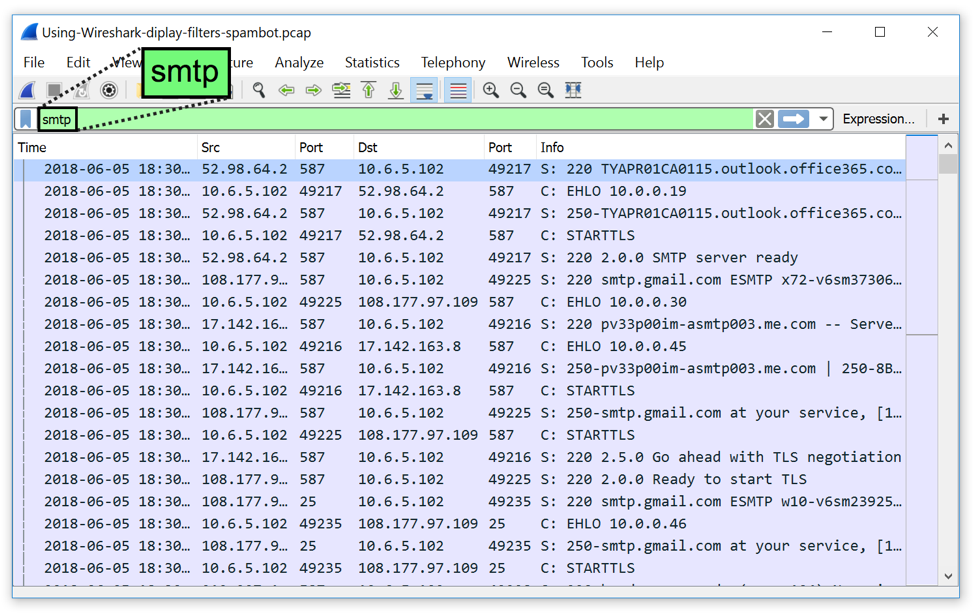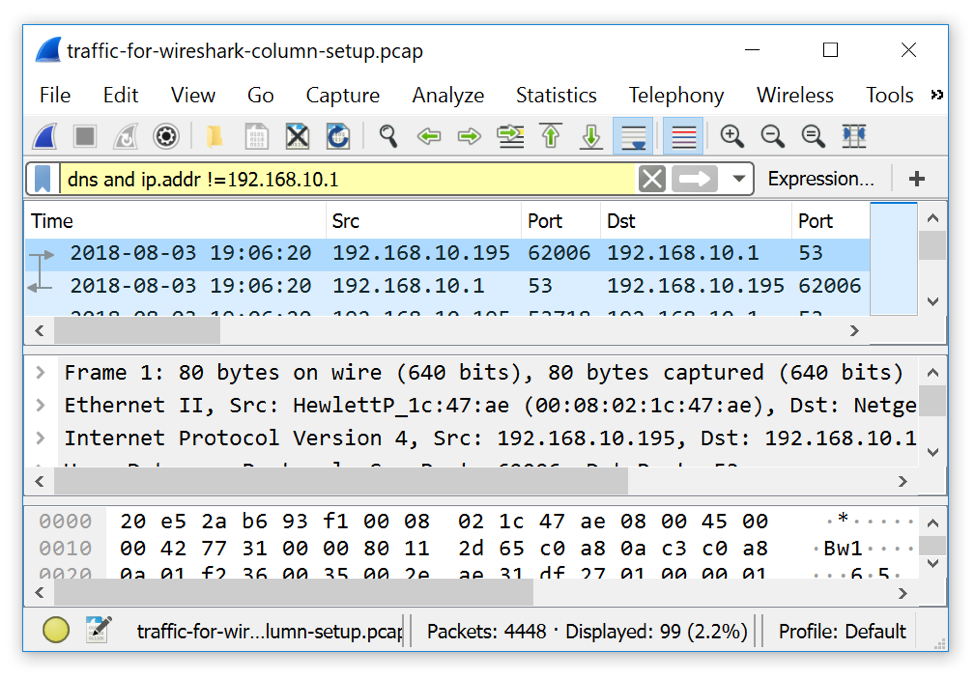


For example, if I wanted to find my dns query for dns and frame contains "cloudshark" Last but not least, you can of course always use the concatenation operators. You can even get more specific, using the “contains” filter to look at specific parts of a frame, such as tcp contains or eth contains. For example, if I only want to view the DNS query with transaction ID Oxb413: The frame contains feature can also be used for Hex values. Take a look at this capture with the above filter applied: …will show you only those packets that contain the word “cloudshark” somewhere in them.ĬloudShark lets you embed these filters right in the URL that you share. The “frame contains” filter will let you pick out only those packets that contain a sequence of any ASCII or Hex value that you specify. You may know the common ones, such as searching on ip address or tcp port, or even protocol but did you know you can search for any ASCII or Hex values in any field throughout the capture? Select "Column Preferences" from the context menu.Įxplain :Frame 36708: 66 bytes on wire (528 bits), 66 bytes captured (528 bits) on interface \Device\NPF_ or great thing about CloudShark’s capture decode is that it supports all of the standard Wireshark display filters. Right-click on the "Time" column in the packet list pane. In Wireshark, select the packet capture you want to view. To convert the time column to a human-readable format, you can follow these steps: In Wireshark, the time column in packet captures is typically displayed in a Unix timestamp format, which represents the number of seconds since the Unix epoch (Januat 00:00:00 UTC).


 0 kommentar(er)
0 kommentar(er)
